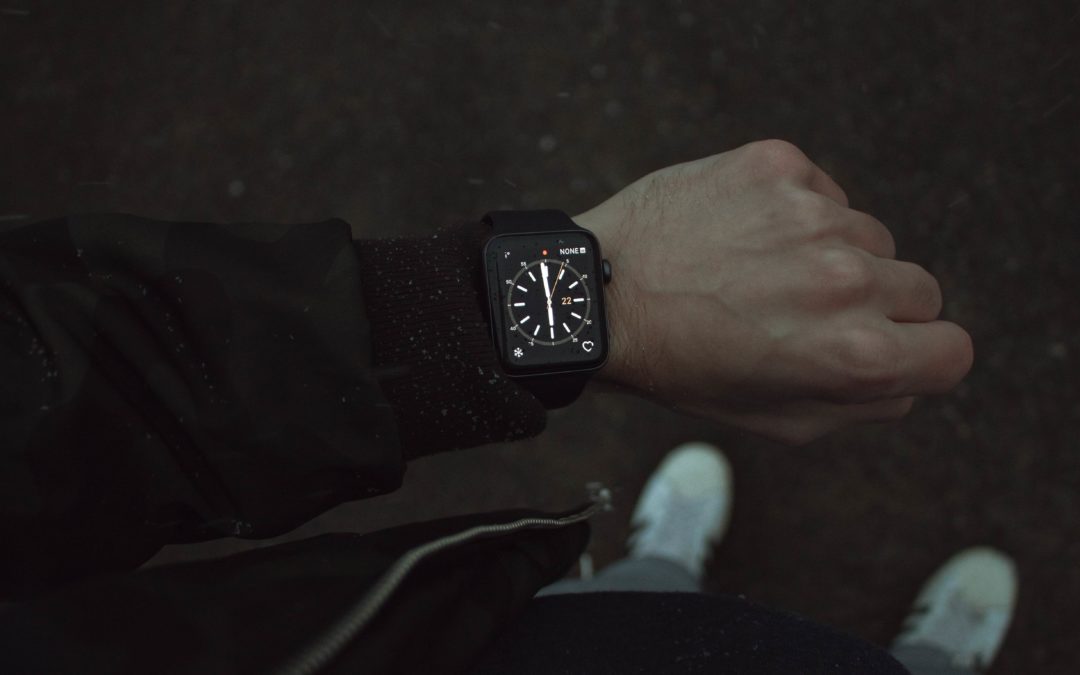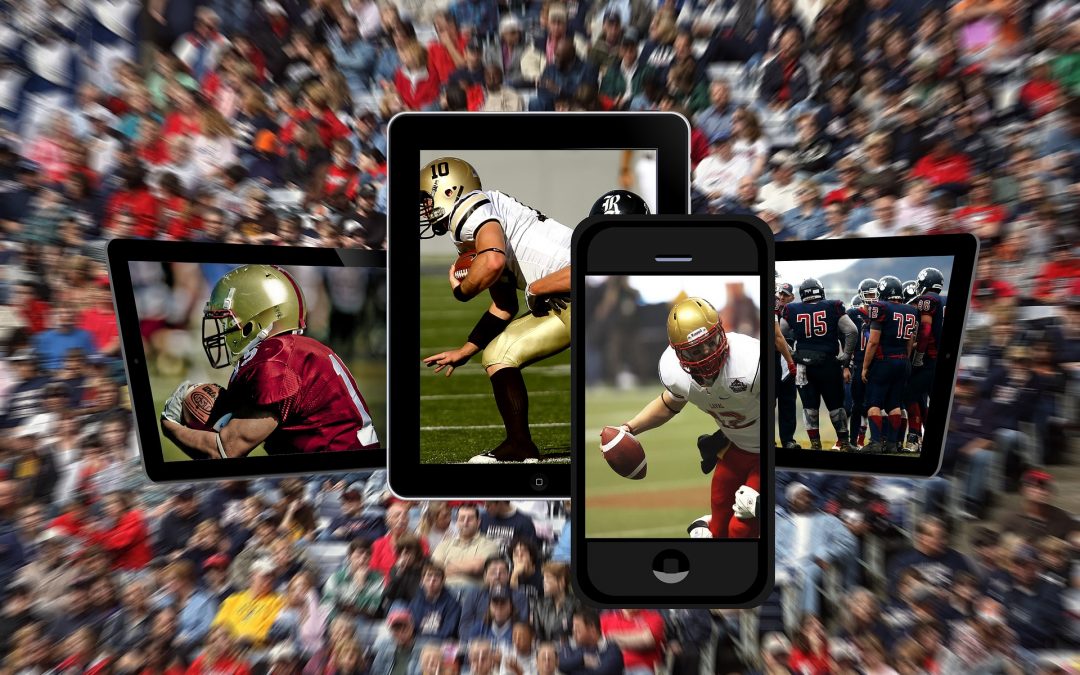
by Don Basile | May 7, 2019 | Tech
Wearable tech has been a slowly rising trend over the past decade. Most wearables these days are health-related, and tracking the body is a difficult task. We’ve seen tech such as sleep trackers and fitness trackers prove beneficial for consumers, but wearables have yet to achieve their full potential. With graphene, that may just become possible.
Graphene is well-known as a “wonder material,” and looking at its properties, it’s easy to see why. Graphene is one of the thinnest materials known to man; it is made up of a single layer of carbon atoms, all connected and interlaced into a lattice, honeycomb-like formation. In addition to being thin, graphene is also incredibly light. But don’t let its size fool you — it’s nearly 200 times stronger than steel, and possess technological capabilities far beyond our current materials provide.
Graphene is excellent at conducting heat and electricity, and the material is a frontrunner in replacing copper and silicon in tech devices. For instance, graphene is particularly good as a sensor, and is being researched for a variety of sensor types, including for gas, DNA, pH levels, environmental contamination, pressure, and more.
Graphene can also potentially impact wearables by powering them for greater capability and lasting power. Using graphene to create next-gen flexible batteries, University of Glasgow researchers have successfully created a graphene supercapacitor that is capable of recharging using solar power and discharges enough energy to power advanced wearable devices.
The most recent and perhaps most important breakthrough in graphene wearables to date were featured at the 2019 Mobile World Congress (MWC) in their Graphene Pavillion. Research nonprofit organization ICFO presented revolutionary graphene-based health-monitoring wearables; these devices are less like the watches and bands that currently occupy much of the wearable tech space, and instead acts like a dermal patch. This means that the graphene wearable can be applied directly to the skin, which can result in improved readings when monitoring health metrics.
ICFO supposes that this graphene tech would be useful in monitoring hydration and blood oxygen levels. This would be particularly helpful for when people are in extreme conditions, such as at the Earth’s poles, high altitudes, or anywhere far from civilization. In such situations, someone could apply the patch, which would use graphene to create miniscule sensors, circuits, and batteries to power the wearable and allow it to track internal data.
The patch would then be paired with a smartphone to allow for real-time communication, and will notify users when they are at risk of dehydration or other severe medical statuses. The patches will also be made to be disposable, and the researchers at ICFO are working to ensure that all components, even necessary adhesives, are biodegradable and environmentally friendly.
With the newly revealed patch-like wearable, graphene is beginning to show the world how it can disrupt various tech-based industries, and the healthcare and medical fields are sure to benefit from graphene research. With the wonder material in its hands, the wearable tech industry is sure to continue making leaps and bounds moving forward.

by Don Basile | Apr 29, 2019 | Tech
Helmets are simple pieces of equipment with a singular function: to protect the wearer’s head. So when it comes to increasing safety capabilities, helmets are ripe for such improvement. Already, we are seeing smart helmets pop up for use in recreational activities like biking and motorcycling. But in particular, soldiers would benefit greatly from the development of smart helmets. Smart helmets would be greatly beneficial in helping prevent serious brain damage and hearing loss, two of the most prevalent dangers for soldiers.
Smart helmets for recreational use, such as biking or motorcycling, have adopted a number of safety capabilities that could be carried over to smart combat helmets. High-end helmet designs have even boasted 360 degrees of visibility, achieved by rear-facing cameras. For soldiers on the battlefield, this would greatly increase spatial awareness and help soldiers avoid danger. A popular feature of smart helmets also includes built-in navigation systems — for soldiers, always being aware of your position is another way to increase awareness and overall safety when in treacherous environments.
India has already begun developing smart helmets with similar spatial awareness capabilities for their soldiers. The helmet features thermal imaging, night-vision, a camera, and can help soldiers identify vehicles and others in the field, able to distinguish between friend and foe via geo-tagging technology.
In the UK, researchers are beginning the process of developing smart combat helmets that can prevent hearing loss. Soldiers are exposed to a significant amount of noise at high volumes, so much so that hearing loss has become a standard occupational hazard for armed forces. To gather information, researchers have been coming up with innovative technologies to record noise levels.
Nottingham Trent University’s Advanced Textiles Research Group has developed microelectromechanical system microphones (MEMS), which are capable of measuring noise levels for extended periods of time. The idea is to integrate the devices with acoustic yarn pieces that can go over each ear in order to unobtrusively record the sound data. With this first step, prevention of hearing loss in combat helmets will soon become a reality.
The US Army has also been experimenting with smart helmets, with a heavy focus on preventing the head damage that has become typical of a soldier’s experience, namely head trauma and hearing loss. In 2017, they developed the Integrated Head Protection System (IHPS), a lightweight ballistic helmet. It functions similarly to the polyethylene Enhanced Combat Helmet that is already being used in the field, but features protective add-ons like a jaw protector and a visor. More recently, the US Army began to test a prototype helmet that is 40% lighter than the IHPS and just as strong.
While particular areas of smart helmet features are being improved upon individually, it is only a matter of time before we see a form of protective headgear that combines these capabilities. In only a few years’ time, soldiers may have access to helmets that have increased protective capabilities for both hearing and physical damage, as well as heightened awareness technology. When this happens, soldiers will be much safer when operating in the field.

by Don Basile | May 11, 2017 | Tech
The quest to crack the machine learning code has been a dream of scientists since the invention of the computer. In 1950 the Turing Test captivated the public’s imagination with a question that likely seemed more based in science fiction than reality: could a computer ever match human intelligence?
We’ve come a long way since the technology of the 1950s, but the goal for machine learning is essentially the same. And we are living into the age when machine learning is bringing the kind of solutions to life that have previously been relegated to sci-fi.
Computers that can learn and adapt autonomously have fast become the new gold standard. And the startups leading the way into our AI future are answering questions even more interesting than whether androids dream of electric sheep. One of the most exciting industries ripe for an AI makeover is healthcare. Machine learning has the power to revolutionize how we detect and treat illness, and also how we approach patient care. Here are 5 machine learning startups in the healthcare sector to keep on your radar:
1. ID Avatars
ID Avatars recently raised $1M in funding to create emotional intelligence aimed at improving patient care for people with chronic diseases. By using avatars to interact with patients directly, this startup hopes to lead the charge in creating technology capable of providing empathy. This would have a huge ripple effect across the healthcare industry and would be as useful to hospitals and pharmaceutical companies as to patients.
2. Arterys
The mission of Arterys is to make clinical care data driven with a machine-learning based imaging platform. They have developed the first 4D Flow Technology to measure blood flow more accurately and in a non-invasive way than current methods. The blood flow work can be done with any MRI. The tech is integrated with a SaaS platform for doctors to better interpret data on the go, and the potential applications for non-invasive blood analytics span across all kinds of medical needs.
3. Babylon
London-based startup Babylon has raised more than $30M, and it’s easy to see why because their idea is so simple but brilliant: remote app-based medical care. In other words, Babylon is your virtual doctor, nurse and pharmacy in one. Imagine how much more streamlined emergency and on-demand care could be through app-based consultations. It’s already the highest rated service in UK healthcare and aims to expand to areas where healthcare is even more essential, like rural Africa, where doctors are scarce but cell phones are becoming commonplace.
4. Nuritas
Utilizing machine learning to create custom diet plans, Nuritas will be a game-changer in preventative health and overall wellness. Based on AI plus DNA analysis, Nuritas is designed to identify the healthiest ingredients specific to your dietary needs. The future will be full of bioactive peptides.
5. Ginger.io
Developed by MIT scientists, Ginger.io uses predictive models to create a mental healthcare platform. This is a useful alternative model to traditional mental health care, which can be prohibitively expensive and frankly not that convenient for the modern world. App users can arrange a video call with a therapist, text with a health coach, learn coping strategies, and analyze their mood over time with the help of embedded sensors. This is mental health care for the 21st century.

by Don Basile | Apr 10, 2017 | Sports, Tech
2017 Agreement Between Players and NBA Says Practice Games Only
From Fitbit Trackers for the average consumer to the Zephyr Bioharness, which is allowed by Major League Baseball for players during actual games, wearable sports technology is hitting fields, tracks and gyms right and left. But not the basketball courts of the NBA, according to a recent decision between the organization and the Players Association.
The collective bargaining agreement released earlier this year states explicitly (and more than 250 pages into the document) that, “No Team may request a player to use any Wearable unless such device is one of the devices currently in use as set forth in Section 13(f)below or the device and the Team’s cybersecurity standards have been approved by the Committee.”
Section F makes it clear that players will only wear the device on a voluntary basis. The agreement further states that devices can be worn during practice— but not games.
Wearable devices for professional athletes measure everything from movement information (such as distance, velocity, acceleration, deceleration, jumps, and changes of direction), to biometric information (heart rate, heart rate variability, skin temperature, blood oxygen, hydration). Depending on the device, other health, fitness and performance information is gathered.
The technology is not, by today’s standard, new. The Adidas miCoach Elite Team System (one of approved devices for practice) hit the market in 2013. It’s touted, by Adidas, as the first of its kind “that uses physiological data in real time sending it straight to a coach’s tablet on the sideline. The system not only provides real-time insights during training, but tracks total training impact, collects and manages data and is highly portable.”
The goal of the system was to “offer insights into player performance and work rate, helping teams achieve and maintain peak physical performance.”
Apparently unconvinced about the need for wearable devices—but well aware that there’s no turning back from the wearable tech trend—the 2017 agreement sets up a committee to continue to explore the issue.

by Don Basile | Mar 23, 2017 | Sports, Tech
“There’s no better time to strike than when you’re winning.” That’s according to Cedric Brown, Interactive Marketing Content Manager for the Miami Heat. On a recent panel called “The Evolution of Sports Fan Experience, Powered By Technology, hosted by Social Media Week Miami, Brown and other Miami tech marketing specialists came together to talk about how Miami teams are modernizing the fan experience–and why a winning team can make all the difference.
Sports teams across the country are undergoing a shift from paper to mobile for tickets. In 2016, this is mostly a welcome change: as Brown points out, “people just don’t use paper anymore.” Four or five years ago, the Miami Heat introduced mobile ticketing at a time it might have not been so popular, if it weren’t for one fact: The Heat were NBA champions from 2011 through 2014. “We noticed that fans hate change,” Brown said. “It’s a lot easier to push a mobile app….when they come to see a great product on the floor.”
Ticketing is just one of many changes disrupting the sports fan experience, but it’s an important one. More people are getting tickets on their phones now than ever, with mobile ticketing expected to account for one in two tickets by 2019. The New York Yankees recently switched over to mobile ticketing entirely, and many teams have apps that makes purchasing easier.
Why make this shift to mobile? There are great benefits on both ends: for fans, there is an element of convenience, fun, and cool rewards; for teams and brands, it is an opportunity to energize fans, bring in additional revenue, and reach sometimes aloof millennial audiences.
Technology can get fans excited, sure, but what excites fans most of all? A winning team. Unfortunately, it’s hard to be excited about poor performance. There’s a cycle: winning teams energize fans, who enable marketers and developers to implement new user-servicing technology, which energizes fans even more, who in turn (hopefully) energize the team to continue winning. Wherever this cycle begins, the idea is simple: fans should have an awesome experience. And losing teams? Fans won’t come out for them, the team won’t profit, less technology will be implemented…. You get the idea.
The relationship between winning, fan experience and technology, of course, begs the question: where does money fit into the equation? The teams with the most wins have the highest payrolls, and are therefore more likely to attract talented CEOs, coaches, and athletes. According to Forbes, “the highly sought-after player is motivated by a combination of the following influences: big money, big money markets where a player can earn bigger-time endorsements, big lifestyles, and the opportunity to play for the biggest time-honored franchises in the history of the sport.”
In a ranking of 2016’s most tech-savvy sports teams, then, it’s no coincidence that the New York Yankees come out on top followed by the Dallas Cowboys.
Where do 2016’s champions stand? The Denver Broncos, who won the most recent Super Bowl, were ranked #14—the second most innovative NFL team. The Broncos having been betting on technology both before and after winning the last two Super Bowls. They have used augmented reality to partner with brands, implementing a “Twitter vending machine” to reward fans, and most recently to host a STEM hackathon.
The Cleveland Cavaliers, who won the NBA champion and are ranked at #10, have adopted 3D mapping technology, virtual reality behind-the-scenes campaigns, and will provide play-by-play “augmented audio” to fans soon.
Then you have the Chicago Cubs, who won the World Series for the first time in over a century. Some have suggested it was their use of big data in analyze pitching performance that helped them finally seal the deal. We’ll have to see if the momentum from the win motivates them to lean into tech trends even more.
All things considered, the Miami Heat remains a great example of how winning empowers teams to take technology to the next level. Their multi-year success brought their fans from a local level to a global level, and ever since the team has been leveraging technology to reach fans across the world. They have redesigned their mobile app and are moving swiftly toward all-digital ticketing. Other winning teams should follow suit.
It’s true that a majority of fans are destined for disappointment regardless of how innovative the fan experience is made to be. But making the journey engaging is worth the while. As long as teams can keep fans on board through the highs and lows that inevitably come, they should be able to make gains in technology too. Just like Brown said—strike when you’re winning, and hope that when you strike out, the fans will stay.




